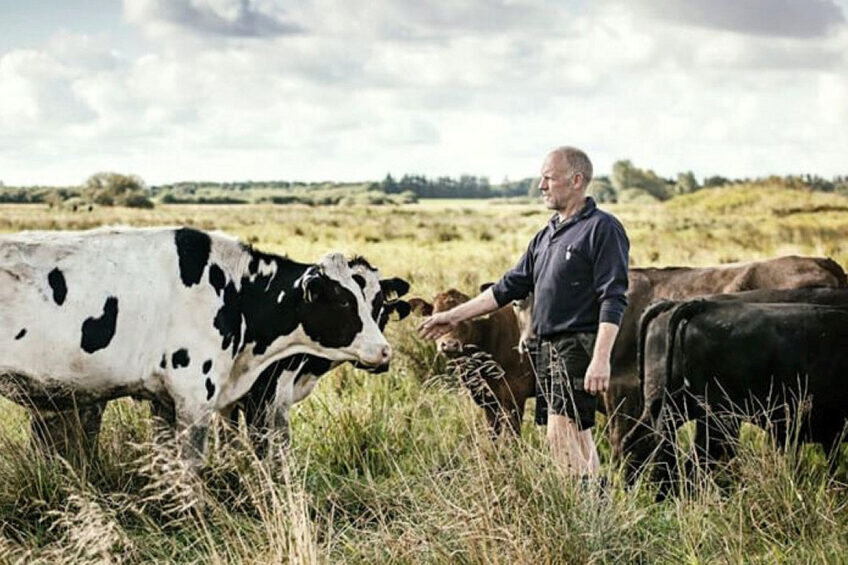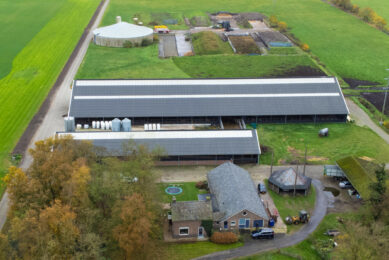Farm report: A peek at running a farm in Denmark

Danish dairy farmer Jens Krogh normally sees hundreds of visitors per year at his 140 cow Kroghsminde organic farm located in the south western part of Jutland in Denmark. Due to the Covid-19 pandemic visits have all ceased, but it’s business as usual for this farm. At this farm, technology is favoured for efficiency.
Jens and his wife Lisbeth took the family farm over from his dad in 1989. “It’s a farm which has been running in the family for seven generations,” Jens says. “Lisbeth and I started up here in 1989 continuing the farm on from my dad. We converted the farm to organic in 1995 and today we have a total of 550 hectares, 400 of which are in rotation and the remainder is grazing land in the Varde Adal national park.”
 Name: Jens and Lisbeth Krogh run the farm Name: Jens and Lisbeth Krogh run the farmLocation: South West Jutland, Denmark Breed: 140 cows – the farmers have been crossing the animals in a rotation between Jersey, Holstein, Swedish red and Montbeliarde. Milking: Cows are milked twice per day using a ten unit per side SAC herringbone milking parlour. The herd’s average yield is 9,100kg per cow per year. Butterfat is around 4.35% and protein at 3.77%. |
“As well as the 140 cows we have 280 other stock including followers and 50 bull beef animals reared for our meat production business. We also have our own windmill and biogas plant. When I bought the farm from my dad the dairy enterprise was already up and running. However, during the following years I changed the way of production to organic, built new housing and expanded the hectares as well as increasing animal numbers. I also started new production of electricity by installing a windmill and biogas system,” he says.

Jens employs two staff members that help him look after the animals which are a mix of breeds across both the dairy and beef enterprises. He says: “I run the business together with two employees, who are in charge of the daily work with the animals. Since 2003 we have been crossing the animals in a rotation cross between Jersey, Holstein, Swedish red and Montbeliarde. For the meat production we use the Charolais breed.”

“Our milk is sold to Naturmaelk and we currently receive 3.5 Danish Krone (£0.40) per kilogramme. Naturmaelk is owned by the farmers who supply it and I am the chairman. Every farmer who delivers milk to the company owns a part of it,” he says. Weather permitting Jens grazes his cows outdoors on pasture from April to October with an intake of around 11kg of total solids per day. The cows are all kept in one group, with no bulls running with them. Bulls are only used on the heifers out at grass in the summer time.

Technology, soil and water factors
Jens likes to keep up to date with the latest technology available that could help him run the farm more efficiently and save labour.
“Back in 2015 we invested in a complete state of the art biogas system producing three million kWh per year to utilise the manure produced by the cattle,” Jens says. “The latest technology to enter the farm is an electric mini wheel loader which has proven very useful around the farm.”
No matter where in the world a dairy farm is located they all have their own unique set of challenges. For Jens in Denmark his involves soil type and a decent water supply. He adds, “Our type of soil is very light, which give some challenges with the water supply on the fields during the summertime. We need to use irrigation on the land to keep the grass growing.

“Of course the Covid-19 pandemic is also affecting us economically on milk and beef prices. Each year we host a lot of visitors on the farm, both professionals and tourists but we have had to suspend those as well albeit temporarily. Hopefully we will be able to welcome those people again soon.”
And looking forward in the future Jens has plans for his herd but that doesn’t include milking more cows. “Our plan for the future doesn’t necessarily mean expansion,” he confirmed. “We will first continue to diversify the production and optimise the business and company as it is now. We would like to develop the business concept with the visitors more professionally, to improve the consumer understanding of the journey dairy products make starting from the soil to the table.”

“The beef production is mainly using the Charolais cross calves from the milking cows and the dairy breed bull calves too. We do sell the meat privately to customers via an email ordering system. That’s a part of the operation that we are stepping down from, in order to get more time off. Lisbeth is in charge of the sales and working as a nurse besides this, so she needs to relax more,” he says. In terms of focusing on the beef side of the business Jens wants to hand control of that to others – allowing him more time with the dairy herd and family.
Join 13,000+ subscribers
Subscribe to our newsletter to stay updated about all the need-to-know content in the dairy sector, two times a week.










